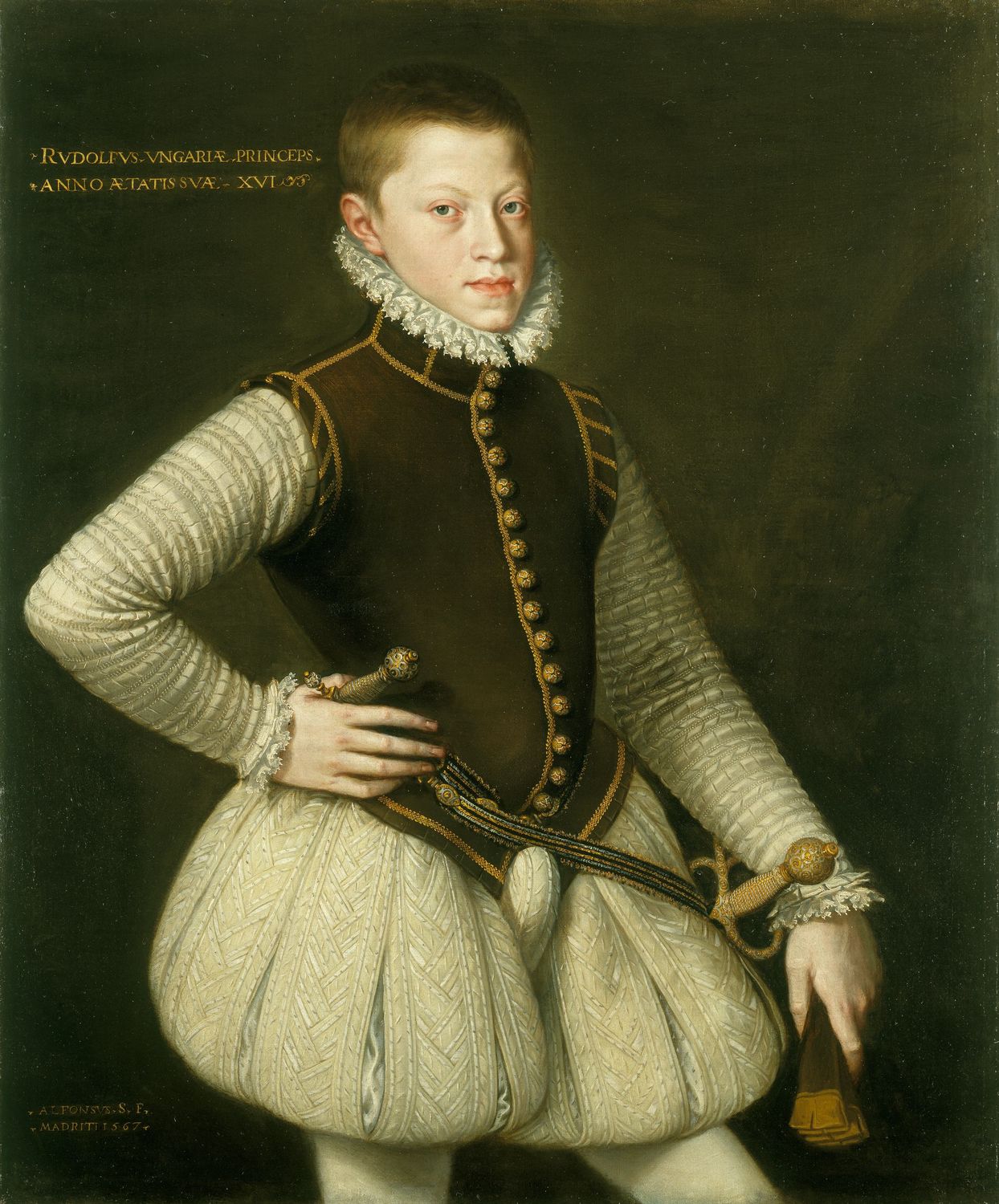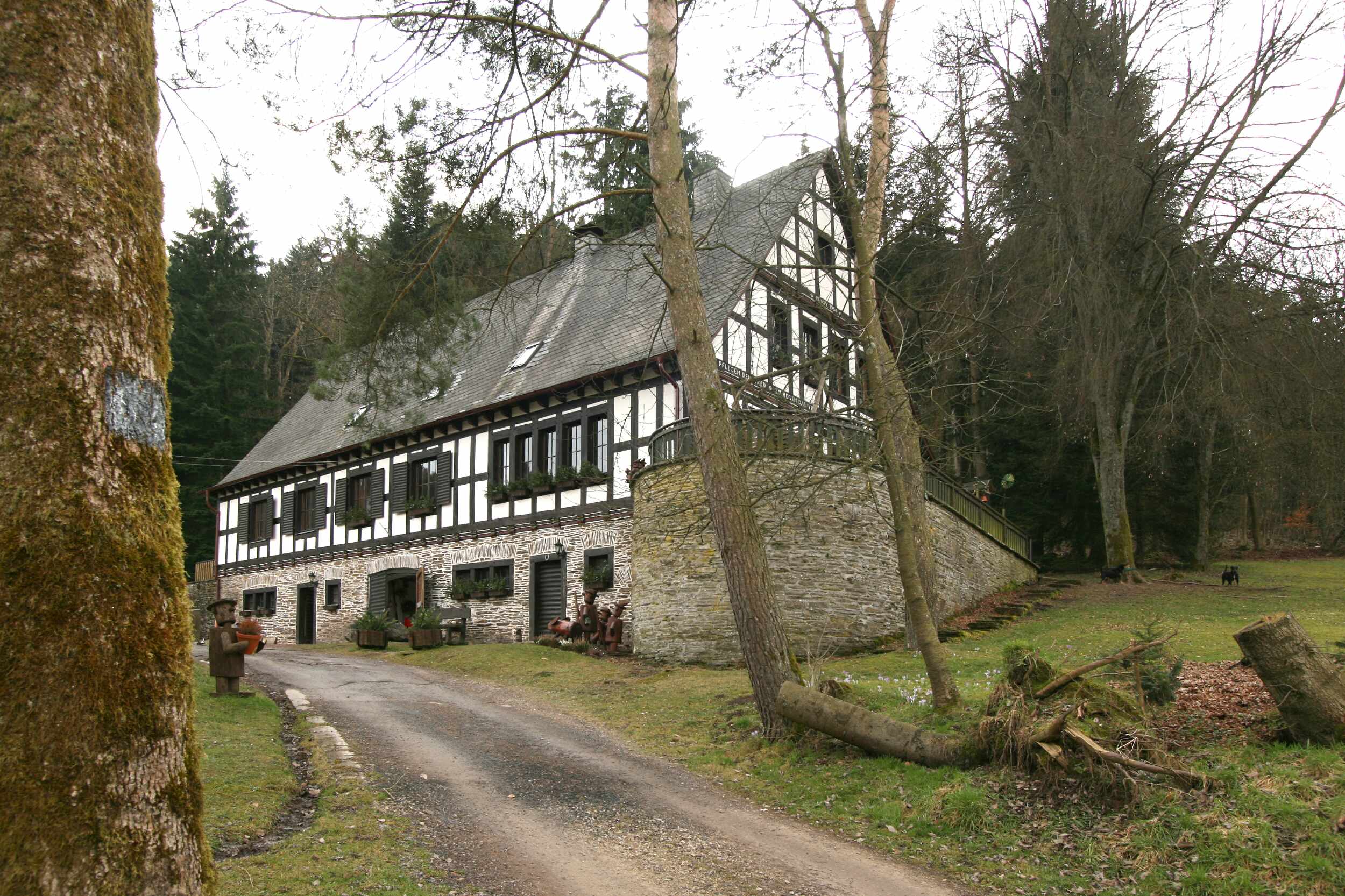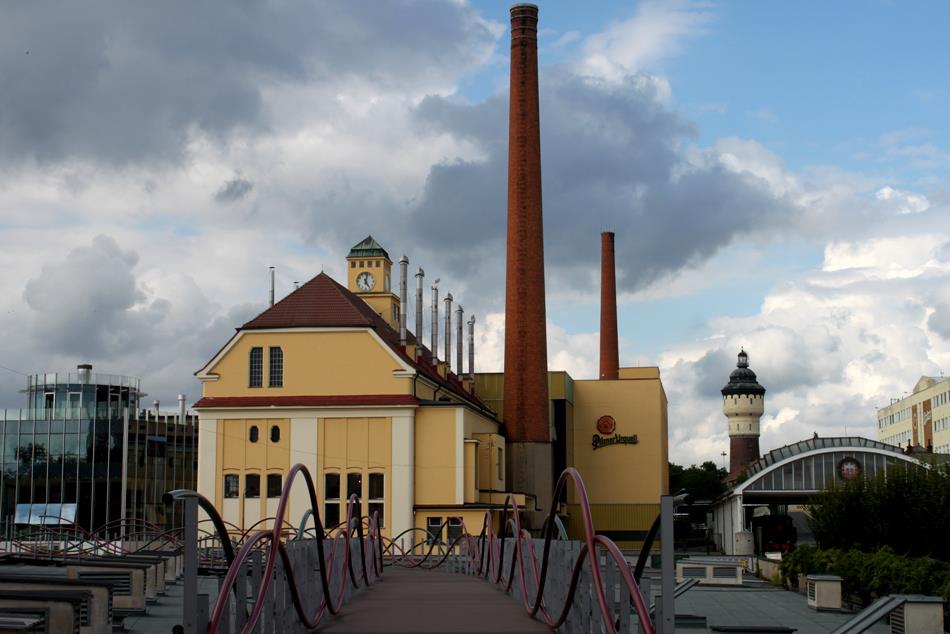|
Lány (Kladno District)
Lány is a municipality and village in Kladno District in the Central Bohemian Region of the Czech Republic. It has about 2,300 inhabitants. The main landmark is the Lány Castle, known as the residence of the Czech and Czechoslovak presidents. Tomáš Garrigue Masaryk, the first President of Czechoslovakia, lived here and is buried in Lány cemetery. Administrative division Lány consists of two municipal parts (in brackets population according to the 2021 census): *Lány (2,046) *Vašírov (183) Etymology The word ''lány'' means in Czech language, Czech 'fields' or 'tracts (of land)'. In older times, the word also denoted land belonging to one court (land cultivated by one person in one cultivation period). Geography Lány lies about west of Kladno and west of Prague. Most of the municipality is located in the Křivoklát Highlands and in the Křivoklátsko Protected Landscape Area. The highest point is at above sea level. History The first written mention of Lány is from ... [...More Info...] [...Related Items...] OR: [Wikipedia] [Google] [Baidu] |
Obec
(, ; plural ) is the Czech and Slovak word for a municipality (in the Czech Republic, in Slovakia and abroad). The literal meaning of the word is " commune" or " community". It is the smallest administrative unit that is governed by elected representatives. Cities and towns are also municipalities. Definition The legal definition (according to the Czech code of law with similar definition in the Slovak code of law) is: ''"The municipality is a basic territorial self-governing community of citizens; it forms a territorial unit, which is defined by the boundary of the municipality."'' Every municipality is composed of one or more cadastral areas. Every municipality is also composed of one or more municipal parts (), which are usually town quarters or villages. A municipality can have its own flag and coat of arms. Czech Republic Almost the entire area of the Czech Republic is divided into municipalities, with the only exception being military training areas. The smaller mu ... [...More Info...] [...Related Items...] OR: [Wikipedia] [Google] [Baidu] |
Rudolf II, Holy Roman Emperor
Rudolf II (18 July 1552 – 20 January 1612) was Holy Roman Emperor (1576–1612), King of Hungary and Kingdom of Croatia (Habsburg), Croatia (as Rudolf I, 1572–1608), King of Bohemia (1575–1608/1611) and Archduke of Austria (1576–1608). He was a member of the House of Habsburg. Rudolf's legacy has traditionally been viewed in three ways:Hotson, 1999. an ineffectual ruler whose mistakes led directly to the Thirty Years' War; a great and influential patron of Northern Mannerism, Northern Mannerist art; and an intellectual devotee of occult arts and learning which helped seed what would be called the Scientific Revolution. Determined to unify Christendom, he initiated the Long Turkish War (1593–1606) with the Ottoman Empire. Exhausted by war, his citizens in Kingdom of Hungary (1526-1867), Hungary revolted in the Bocskai uprising, Bocskai Uprising, which led to more authority being given to his brother Matthias, Holy Roman Emperor, Matthias. Under his reign, there was ... [...More Info...] [...Related Items...] OR: [Wikipedia] [Google] [Baidu] |
Jože Plečnik
Jože Plečnik () (23 January 1872 – 7 January 1957) was a Slovenian architect who had a major impact on the modern architecture of Vienna, Prague and of Ljubljana, the capital of Slovenia, most notably by designing the iconic Triple Bridge and the Slovenian National and University Library building, as well as the embankments along the Ljubljanica River, the Ljubljana Central Market buildings, the Ljubljana cemetery, parks, plazas. His architectural imprint on Ljubljana has been compared to the impact Antoni Gaudí had on Barcelona. His style is associated with the Vienna Secession style of architecture (a type of Art Nouveau), but he also has influences from the baroque tradition in Slovenia, as well as Byzantine and early eighteenth century Viennese architecture. Plečnik was one of the few notable modernists who did not entirely reject historic forms and ideas, instead paying what he believed to be a debt to history in his designs. Besides in Ljubljana, he worked in V ... [...More Info...] [...Related Items...] OR: [Wikipedia] [Google] [Baidu] |
Overview Of Lány Castle And Church Of Holy Name In Lány, Kladno District
*
*
{{disambiguation ...
Overview may refer to: * Overview article, an article that summarizes the current state of understanding on a topic * Overview map, generalised view of a geographic area See also * Summary (other) * Outline (list) * ''A Brief Overview'' * Overview and Scrutiny * Overview effect The overview effect is a cognitive shift reported by some astronauts while viewing the Earth from outer space, space. Researchers have characterized the effect as "a state of awe with self-transcendence, self-transcendent qualities, precipitated b ... [...More Info...] [...Related Items...] OR: [Wikipedia] [Google] [Baidu] |
Stochov
Stochov (; ) is a town in Kladno District in the Central Bohemian Region of the Czech Republic. It has about 5,300 inhabitants. Administrative division Stochov consists of three municipal parts (in brackets population according to the 2021 census): *Stochov (4,423) *Čelechovice (365) *Honice (491) Etymology According to legend, the name is derived from ''sto chův'' (i.e. "hundred nannies") and refers to nannies, who take care here of young Saint Wenceslaus. In fact, the name is derived from the personal name Stoch, meaning "Stoch's (court)". Geography Stochov is located about west of Kladno and west of Prague. It lies in the Džbán range. The Loděnice River flows along the northern municipal border. History The first written mention of Stochov is from 1316. It used to be a small village until the second half of 20th century, when a large housing estate was built west of Stochov to accommodate the increasing number of people working in coal mines in the Kladno area in the ... [...More Info...] [...Related Items...] OR: [Wikipedia] [Google] [Baidu] |
Hrob TGM V Lánech - 2
Hrob () is a town in Teplice District in the Ústí nad Labem Region of the Czech Republic. It has about 2,000 inhabitants. Administrative division Hrob consists of four municipal parts (in brackets population according to the 2021 census): *Hrob (1,331) *Křižanov (140) *Mlýny (127) *Verneřice (355) Etymology The word ''hrob'' means 'grave' in modern Czech, but this is just a coincidence. The original German name was ''Grap'', later modified to ''Grab'' and transcribed into Czech as ''Hrob''. The word ''grap'' was probably a term for a prospector's trench for search of silver ores. Geography Hrob is located about west of Teplice and west of Ústí nad Labem. The southern part of the municipal territory with the built-up area lies in the Most Basin and the northern part lies in the Ore Mountains. The highest point is at above sea level. The Bouřlivec Stream flows through the town. Artificial lakes Otakar and Barbora are located south of the town. History The first writt ... [...More Info...] [...Related Items...] OR: [Wikipedia] [Google] [Baidu] |
Forester's Lodge
A forester's lodge, forester's house or forester's hut is the residence of a forester, usually one who is in charge of a forest district. History Woodcutters' huts are as old as forestry itself. To begin with, temporary accommodation was usually built for the clearing of areas of forest, but they became more permanent in the High Middle Ages in Europe as more and more timber was felled for mining, saltworks, shipbuilding and firewood, in order to reduce the distance from home to workplace. The foresters could remain in an area of timber felling for weeks. With the development of forestry rights, the profession of foresters emerged and so the forester's lodge became a place of work. In some cases, large forester's estates were created. Usually forester's houses are solid, brick-built structures that are often permanently occupied, for example as forestry administrative offices, and usually in or near settlements, while forester's huts are less well built, simpler shelters and ov ... [...More Info...] [...Related Items...] OR: [Wikipedia] [Google] [Baidu] |
Plzeň
Plzeň (), also known in English and German as Pilsen (), is a city in the Czech Republic. It is the Statutory city (Czech Republic), fourth most populous city in the Czech Republic with about 188,000 inhabitants. It is located about west of Prague, at the confluence of four rivers: Mže, Úhlava, Úslava and Radbuza, together forming the Berounka River. Founded as a royal city in the late 13th century, Plzeň became an important town for trade on routes linking Bohemia with Bavaria. By the 14th century it had grown to be the third largest city in Bohemia. The city was besieged three times during the 15th-century Hussite Wars, when it became a centre of resistance against the Hussites. During the Thirty Years' War in the early 17th century the city was temporarily occupied after the Siege of Plzeň. In the 19th century, the city rapidly industrialised and became home to the Škoda Works, which became one of the most important engineering companies in Austria-Hungary and later ... [...More Info...] [...Related Items...] OR: [Wikipedia] [Google] [Baidu] |
Wagonway
A wagonway (or waggonway; also known as a horse-drawn railway, or horse-drawn railroad) was a method of rail transport, railway transportation that preceded the steam locomotive and used horses to haul wagons. The terms plateway and tramway (industrial), tramway were also used. The advantage of wagonways was that far bigger loads could be transported with the same power compared to horse haulage along roads. Ancient systems The earliest evidence is of the long ''Diolkos'' paved trackway, which transported boats across the Isthmus of Corinth in Greece from around 600 BC. Wheeled vehicles pulled by men and animals ran in grooves in limestone, which provided the track element, preventing the wagons from leaving the intended route. The Diolkos was in use for over 650 years, until at least the 1st century AD. Paved trackways were later built in Roman Egypt. Wooden rails Such an operation was illustrated in Germany in 1556 by Georgius Agricola (image left) in his work De re met ... [...More Info...] [...Related Items...] OR: [Wikipedia] [Google] [Baidu] |
House Of Fürstenberg (Swabia)
The House of Fürstenberg () was an influential Swabian noble family in Germany, based primarily in what is today southern Baden-Württemberg near the source of the Danube river. Numerous members of the family have risen to prominence over the centuries as soldiers, churchmen, diplomats, and academics. Sometimes the name is gallicized as de Furstenberg or anglicized as Furstenberg. History Fürstenberg was a county of the Holy Roman Empire in Swabia, present-day southern Baden-Württemberg, Germany. The county emerged when Count Egino IV of Urach inherited through marriage large parts of the Duchy of Zähringen upon the death of Duke Berthold V in 1218, and was originally called the county of Freiburg. Egino's grandson Count Henry began to take as his surname the name of his residence at Fürstenberg Castle around 1250. File:Burg Hohenurach gesehen vom Eppenzillfelsen.jpg, Urach Castle File:01, Burg Fürstenberg (Hüfingen).JPG, Land works of the former Fürstenberg Ca ... [...More Info...] [...Related Items...] OR: [Wikipedia] [Google] [Baidu] |
Joseph Wilhelm Ernst, Prince Of Fürstenberg
Joseph Wilhelm Ernst, Prince of Fürstenberg (13 April 1699 - 29 April 1762) was a prince of Fürstenberg-Fürstenberg who changed his residence to Donaueschingen, at the head of the Danube, and thus converted the existing settlement into a town and constructed Schloss Donaueschingen. Early life Born as a member of the House of Fürstenberg Joseph was the second son of Landgrave Prosper von Fürstenberg-Stühlingen (1662–1704) and his wife, Countess Sophie Anna Eusebia von Königsegg-Rothenfels (1674–1727). Title of Fürst On 2 December 1716 Joseph was awarded with the hereditary title of Fürst by Charles VI, Holy Roman Emperor. Marriages and issue On 6 June 1723 he married Countess Maria Anna von Waldstein-Wartenberg, heiress of Pürglitz (1707-1756). They had six children: * Joseph Wenzel (1728–1783) * Karl Egon (1729 - 1787), married Countess Maria Josepha von Sternberg (1735-1803), father of Karl Aloys zu Fürstenberg * Maria Augusta Josepha (1731–1770), ... [...More Info...] [...Related Items...] OR: [Wikipedia] [Google] [Baidu] |





